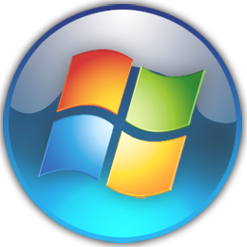Uninstalling older Webroot Software
If a previous version of Webroot security software, such as Spy Sweeper or Webroot 2011, is installed on your computer, we recommend removing this program and installing the latest version of Webroot software: SecureAnywhere.These instructions require that you restart your computer several times. For convenience, you may choose to print them
Part 1: Uninstall previously installed Webroot Security software via the Control Panel
Note: If you receive an error during this step, or are unable to complete this step for any reason, please proceed to Part 2.
- Follow the correct steps for your Operating System.
Windows XP:
- Click Start, then click Run. In the Run window, type appwiz.cpl, then press Enter on your keyboard.
Windows Vista/Windows 7:
- Click Start, or the Windows icon
 . In the search field, type appwiz.cpl, then press Enter on your keyboard.
. In the search field, type appwiz.cpl, then press Enter on your keyboard.
Windows 8:
- Move your cursor to the bottom right of the screen to open the Charm Bar menu. Click Search, type appwiz.cpl, then press Enter on your keyboard.
This opens your Control Panel to the list of all programs currently installed on your computer.
- Scroll down the programs list until you see the older Webroot security product you want to remove.
- Select that Webroot entry and click Uninstall/Remove.
- Confirm any messages to uninstall the program.
- Once the uninstall process has finished, restart your computer.
Part 2: Create a System Restore Point
Note: We strongly recommend that you perform Parts 3 through 5 ONLY after creating a System Restore Point, described in this section. Ensuring that the Windows built-in System Restore feature is enabled, and that regular restore points are created, can be very valuable in the event that restoring to an earlier time is needed. If you are unable or do not wish to create a restore point, skip to the next section.
Windows XP:
Windows Vista or Windows 7:
Windows 8:
- Navigate to Start > All Programs > Accessories > System Tools > System Restore > Create a restore point.
Windows Vista or Windows 7:
- Navigate to Start > right-click Computer > choose Properties > select System Protection from the left panel > and choose Create.
Windows 8:
- Press the Windows key + E to open Windows Explorer > click the Computer tab on the top ribbon > choose Properties > select System Protection from the left panel > and click Create.
Part 3: Run the Webroot utility CleanWDF.exe
After you have created your System Restore Point, download and save the Webroot CleanWDF.exe removal/cleanup tool to your Desktop. Click the link below or copy and paste it into your Internet browser’s address bar:
https://download.webroot.com/CleanWDF.exe
Note: Running CleanWDF.exe can benefit those who previously installed or were running Webroot Internet Security Essentials/Complete. It can also benefit those who may have had, or are still running, the legacy Webroot Desktop Firewall software. This program should be removed, as it is no longer supported.
- Double-click the CleanWDF.exe utility to run it.
- Click the Clean button to begin the cleanup process. This process runs very quickly.
If Webroot firewall drivers are detected, they will be removed and you will receive the dialog: "Webroot Desktop Firewall Removal Completed. You must restart your system. Click Yes to restart now, or No if you plan to restart later." We recommend you restart our computer now.
If you simply see a dialog that reads "Webroot Desktop Firewall Removal Completed," click OK, then click Close and proceed to the next section.
Part 4: Run the Webroot utility WRUpgradeTool.exe
Download and Save the Webroot WRUpgradeTool.exe cleanup utility to your Desktop. Click the link below or copy and paste it into your Internet browser’s address bar:
https://download.webroot.com/WRUpgradeTool.exe
Note: Running WRUpgradeTool.exe can benefit those who have installed or attempted to install Webroot security software, and may still have remnants of installed files. Such files may interfere with the current installation attempt.
- Double-click the WRUpgradeTool.exe utility to run it, and follow the prompts to start the uninstall process.
- The cleanup process is finished when the last line in the window reads "Removal procedures have been completed." Click Close.
- If prompted to restart your computer, we recommend you do so now.
If the above steps are not successful, you can submit a customer support ticket here.
If you would now like to reinstall Webroot and require instructions, click here.
Thanks for your feedback!
Powered by NOHOLD Inc. U.S. Patent No. 10,659,398
All Contents Copyright© 2025
